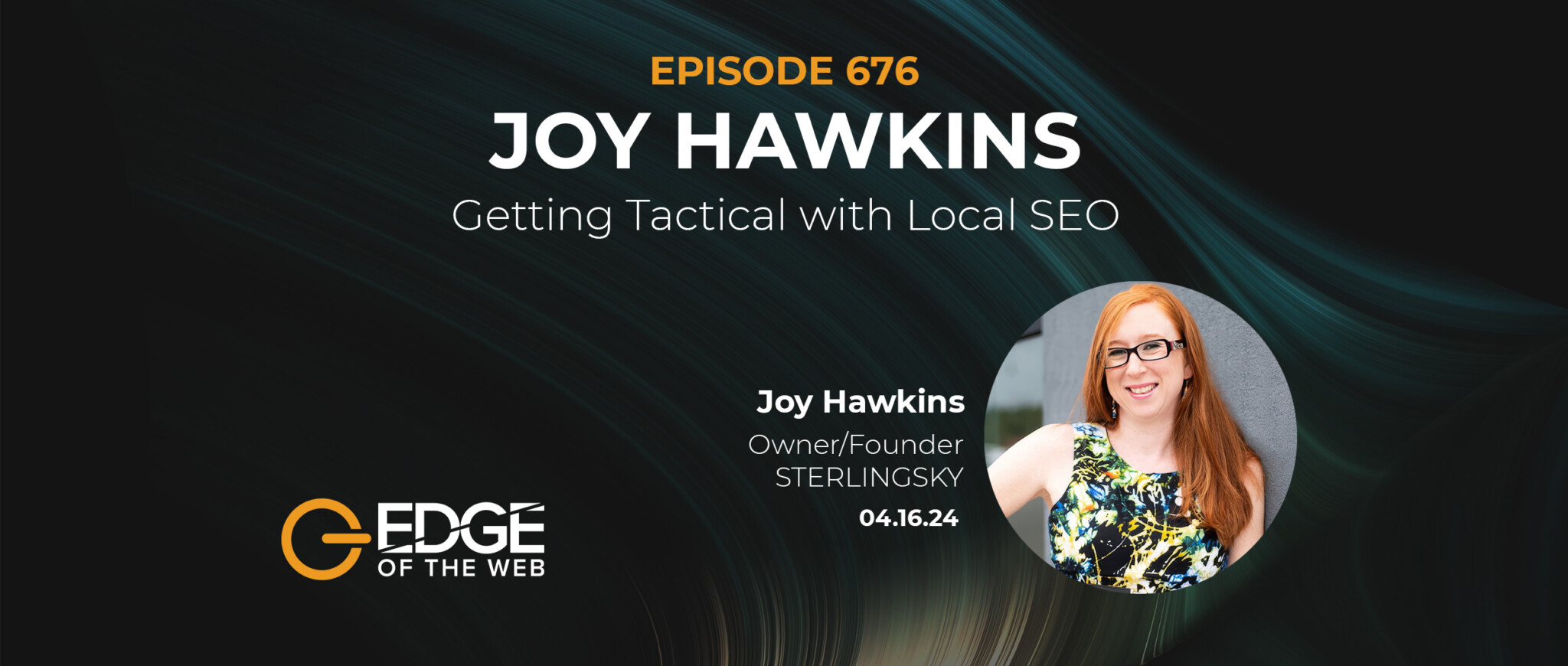Our special guest for episode 405 of the award-winning EDGE of the Web podcast was Ashley Segura, VP of Operations and CoFounder of TopHatContent. Host Erin Sparks spoke with Ashley about recent developments in content marketing and how to make the most of content. Here’s what we learned:
[00:03:13]
Ashley Segura: Her Background and Experience
Ashley is an international speaker and VP of Operations and CoFounder of TopHatContent, a content marketing agency. She has worked extensively both in-house and with multiple agencies helping clients grow their businesses online. Ashley regularly teaches digital marketing workshops and speaks at industry conferences like Pubcon, BrightonSEO, SearchLove, Digital Summit, Retail Global, and the prestigious SMS Sydney. Ashley has also co-authored the best-selling book The Better Business Book V.2 and is a contributing writer to industry blogs such as Search Engine Journal and AuthorityLabs.
Ashley got into content marketing back in 2011. She already had a journalism background, so content was always important, but it was a conscious decision to begin taking all her content digital rather than print. That was the beginning of understanding digital content, what engages users and gets them to move from content piece to content piece. She has worked at multiple agencies and also became a serial agency owner (she’s on something like her fourth agency now). Each agency iteration has gotten her closer to the Holy Grail of content services that make a real difference.
[00:06:13]
The Constant Evolution of Content Consumption
The content playing field and how people digest content has changed so much since 2011, as has the way people search for content. The focus keeps shifting. For a while the emphasis was on short content because people want quick answers. Then it became long content because people are actually taking the time to digest it. Search users started putting in long-tail keywords to their queries. Now they are asking full-blown questions as if they’re talking to a friend. All these things and changes feed into what kind of content gets created in order to satisfy users as best as they can be understood.
[00:09:37]
Content Marketing Research: How to Begin
If you want to build a content research model you can repeat, Ashley noted that it begins with clearly defining who your personas are. This is marketing 101, but it’s so much more powerful these days because of the all the data that’s available. You can really come up with several exact match personas of who is tuning in to your content, who is visiting your website, who is going to your social media sites, and then create content specifically for them. This doesn’t mean one type of content is going to fit them all, so before doing a content audit or content creation or even developing a content strategy, the first order of business is dive deep into the backend data to really figure out who those people are—both the ones who are highly engaged as well as the ones you’re trying to engage but have missed for some reason.
What you can create from this kind of data analysis is very specific. You might have three different personas—A, B, and C. And you know each persona is going to like a certain kind of content posted on certain days on certain platforms. There will be similarities across the personas, but also things that are significantly different enough to warrant them being a distinct persona type. You have to know those personas in order to then create content that reaches them and engages them at all times.
The data will tell you what content different personas want and how they want to consume that content—their preferred digital channels. One persona knows what they want in terms of products and just needs to see if you offer a good deal, while another persona needs a lot more research and education content to build trust and credibility.
After you’ve nailed down those personas, the next step is to go out there and see what’s already been done because just about everything has already been done at some point. From an agency perspective, you ask the client who they think are their top 3–5 direct competitors, and you start there. But then you do your own manual searching on the relevant keywords and topics to see what surfaces because nine times out of ten you’re going to see even stronger competitors than what the client named, and you definitely want to see what they’re doing because they’re the ones who are currently winning the game. And of course there are all kinds of tools out there to help with this kind of research as well.
When you find some of those key pieces of content, whether old or new, that rise above the others, study the structure and learn from it. Examine closely any comments that contain questions and other relevant content from users because those might be pointing out content that was missing from the original piece that you can incorporate into your piece. You need to understand why those sites are doing so well, and it doesn’t always have to do because of their brand or domain authority. Learn how they’re getting their results and then you can do it just as well if not better.
Thanks to social media engagement, brands can also just ask directly what people want in terms of content, and people respond. This is how small players can stay in the game when they don’t have the resources to do focus groups and other old-school marketing research that the big corporations can still do.
Also be wary about attempting to jump into trending topics just for the sake of getting in on the conversation. There will probably be a number of big voices that tend to dominate the discourse on trending topics, so the chances of your brand getting any traction in there is slim to none. But if you do feel the need to weigh in on trending topic, be smart about it. Go to the SEMrush Topic Research Tool to learn about what people are asking about a specific topic. Your goal is to identify what questions are not being answered by the trending articles, and there are always at least a few. If your content addresses those questions, then you might do well. That’s how you could make a stand out difference on a trending topic rather than just blending in.
[00:21:32]
Aligning Content Marketing to Business Goals
Different business goals require different kinds of content and different ways of presenting that content. A big, basic goal of almost all marketing is sales because you have to keep money flowing into the business. You can create a series of content pieces that lead customers down the sales funnel, rather than just relying on phone calls. Think about the kinds of information the potential customer needs along the funnel to get them comfortable and informed so they have what they need at the conversion point. And you can track them to see if they’re moving through the content pieces as you’ve ordered them in the virtual funnel.
[00:24:27]
Building Trust Through Content Marketing
Trust plays such a huge role in digital marketing today, but how do you even measure it let alone figure out how to build it through content marketing? The starting point, once again, is data. Get out there see what your brand sentiment is by looking at what people are actually saying about your brand online right now. Are you getting backlinks and are they high-authority backlinks? If you are, that builds trust not only on the part of the search engine that your site is good, but it also builds trust with other users.
A more analytical way to look at it would be through your bounce rate. If you have high traffic but also a high bounce rate, there’s a reason they’re bouncing right off your piece of content or your site. Of course, there could be a thousand different reasons why they’re bouncing, including things as simple as slow page loading speed or how it looks on mobile. If you can eliminate those sorts of reasons using tools like Google Search Console, then what’s left is an issue of trust. If you’ve claimed the user will find x-y-z by following this link to a page on your site but when they get there they don’t see x-y-z, then they’re bouncing because you’ve lost their trust.
Measuring trust is tricky, but there are some good tools you can use to help you track brand sentiment, such as Mention. There’s also the SEMrush Brand Monitoring tool that includes a sentiment analysis feature. Brandwatch is another one. But if you’re already using something like SEMrush for your content marketing, then it’s easy to just use their brand monitoring tool as well.

























